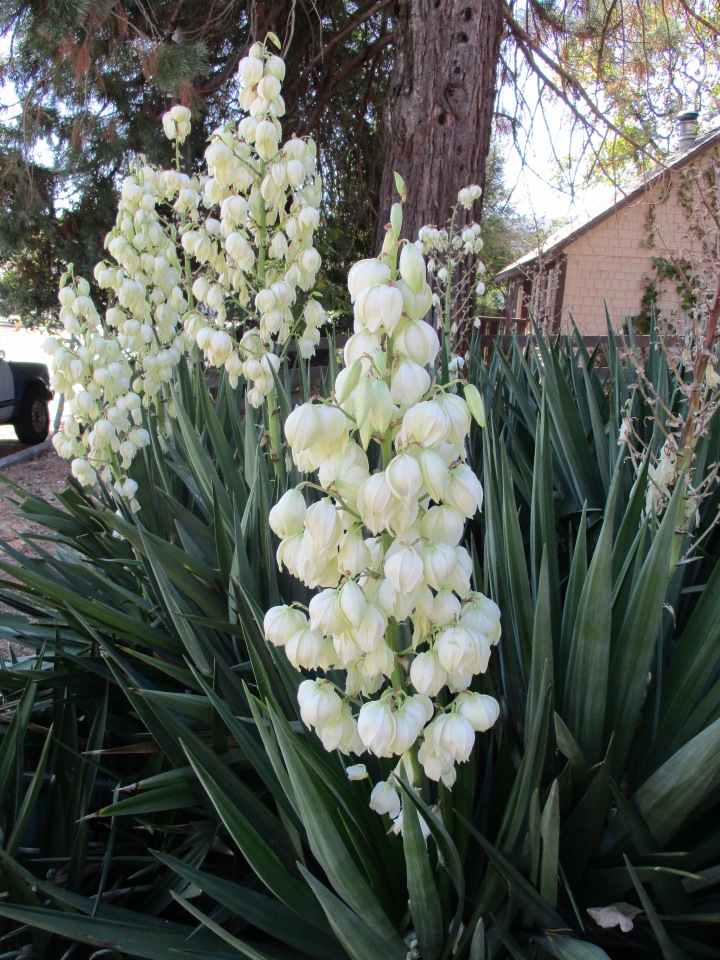 The gardens with the most flowers need the most deadheading. This involves the removal of deteriorating flowers and any developing fruiting structures and seed associated with them so that they do not divert resources from subsequent bloom or vegetative growth. Old flowers that do not produce seed because they are sterile or lack pollinators might get deadheaded too if unsightly.
The gardens with the most flowers need the most deadheading. This involves the removal of deteriorating flowers and any developing fruiting structures and seed associated with them so that they do not divert resources from subsequent bloom or vegetative growth. Old flowers that do not produce seed because they are sterile or lack pollinators might get deadheaded too if unsightly.
Deadheading is not for everyone though. Flowers up in trees, big shrubbery or large vines are obviously out of reach. Many annuals, like alyssum and nasturtium, produce far too many flowers to be deadheaded. Most plants bloom and disperse seed without bothering anyone, or even getting noticed. Bougainvillea blooms too flamboyantly to miss, but then sheds neatly without any help.
Bougainvillea does not set seed anyway. The insects that naturally pollinate it within its native range in the Amazon River Basin probably do not live here. Yuccas that live far from their native range likewise lack the specific yucca moth that they rely on for pollination, although some get pollinated by accident. Big yucca stalks get deadheaded just because they are not appealing after bloom.
What is more fun than what gets deadhead is what does not get deadhead. The alyssum and nasturtium mentioned earlier naturally naturalize where they get watered. They toss so many seed around that they can replace themselves as readily as the old plants die out. California poppy, cosmos, calendula, campion, and many other annuals as well as a few perennials, can do the same.
Besides that, there are all sorts of seed that can be collected from old flowers for the following season. Each variety of flower finishes in its own season. Each variety likewise gets sown in its own season. It is not necessary to leave all fading flowers if only a few can provide enough seed for later. It is important to remember that hybridized and some overly bred cultivars do not produce viable seed, and that subsequent generations of the fancier varieties will revert to be more similar to their simpler ancestral parents.
I am a seed collector. My neighborhood association did not like me letting my flowers go to seed. I have changed my ways and only let the backyard go to seed.
LikeLiked by 1 person
I used to sweep up the nasturtiums that were so abundant on my concrete walkway out front, and leave them in jars for neighbors. I do not think my neighbors would have liked too many other flowers going to seed.
LikeLiked by 1 person
I also love the perennial forget-me-not Brunnera and the annual forget-me-not which both do a nice job of re-seeding! And the little Australian violet is a nice reseeder – although it is a little too good at it sometimes!
LikeLiked by 1 person
The annual forget-me-not is naturalized here, but is polite about it. It is not problematically invasive. I sort of would like to get rid of the white sweet violets, because they grow wherever I would prefer the violet colored violets. Australian violet does not naturalize here, although it does appear here and there every now and then.
LikeLike
I would have picked up a jar of your nasturtium seeds! I’ve never had much luck growing them.
LikeLiked by 1 person
Gads! Some consider them to be weeds!
LikeLiked by 1 person
I was told my soil was too rich. They like poor soil. Could there be any truth to that?
LikeLiked by 1 person
For some plants, that can be a real problem, but nasturtiums seem to grow in anything. If the richness of the soil were a problem, it should only cause them to bloom less and instead produce an overabundance of lush foliage.
LikeLiked by 1 person
Must be some other reason. Failure to thrive two years in a row
LikeLiked by 1 person
Could ‘too rich’ mean that there was so much fertilizer applied to the soil that it is now toxic to nasturtiums?
LikeLiked by 1 person
I remember using a lot of compost that I bought from the city.
LikeLiked by 1 person
Well, that would not make it toxic. However, if it was not composted adequately, it could take the nitrogen out of the soil. Uncomposted wood chips are sometimes used as mulch to control weeds.
LikeLiked by 1 person